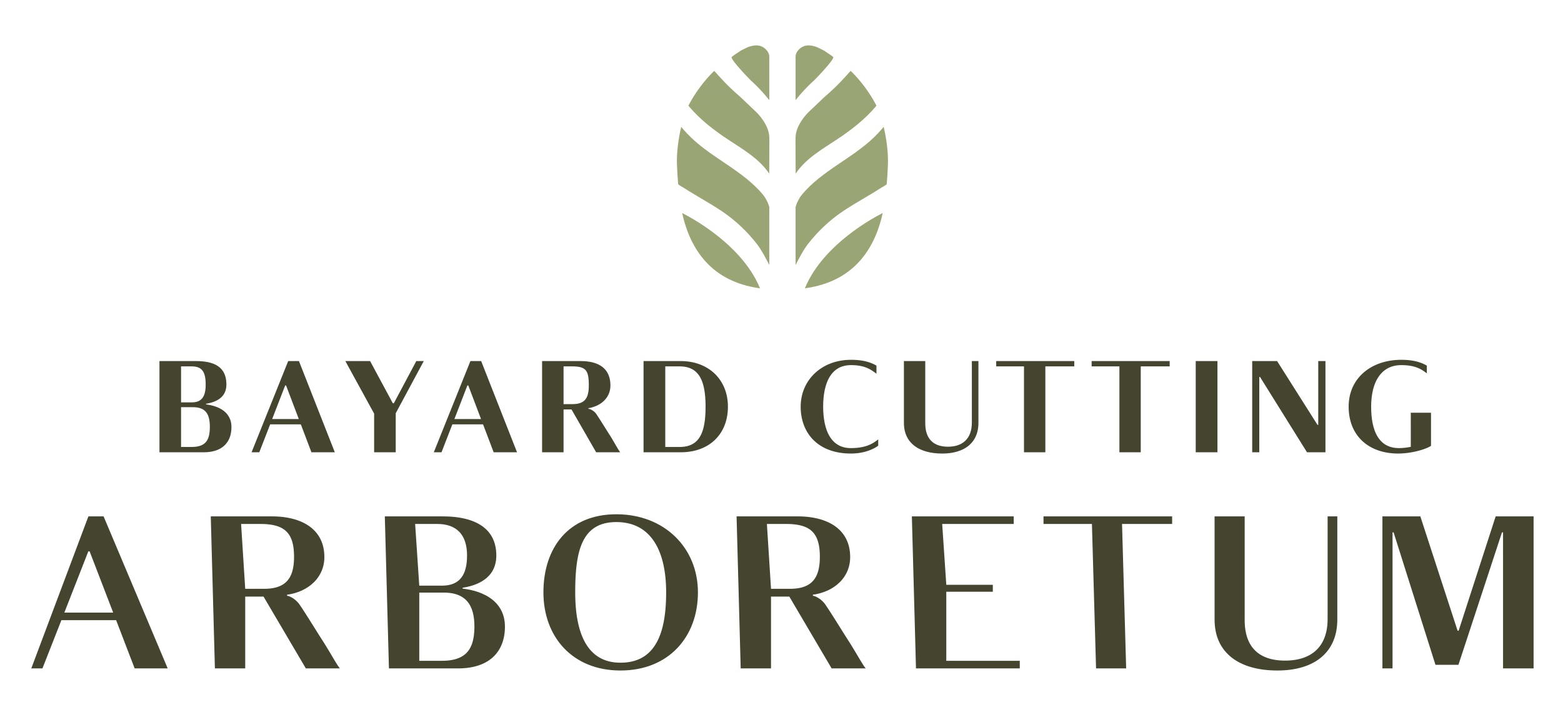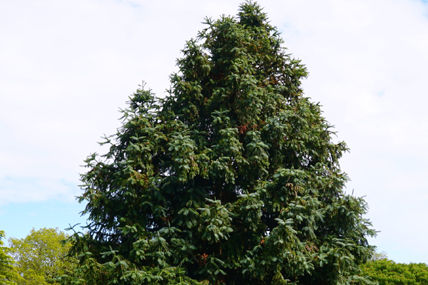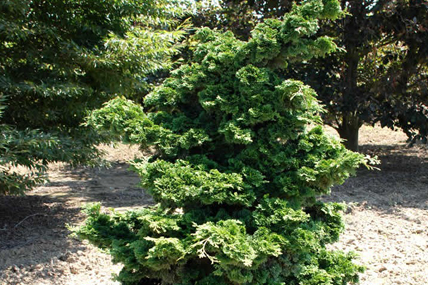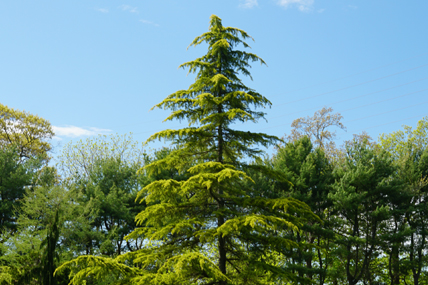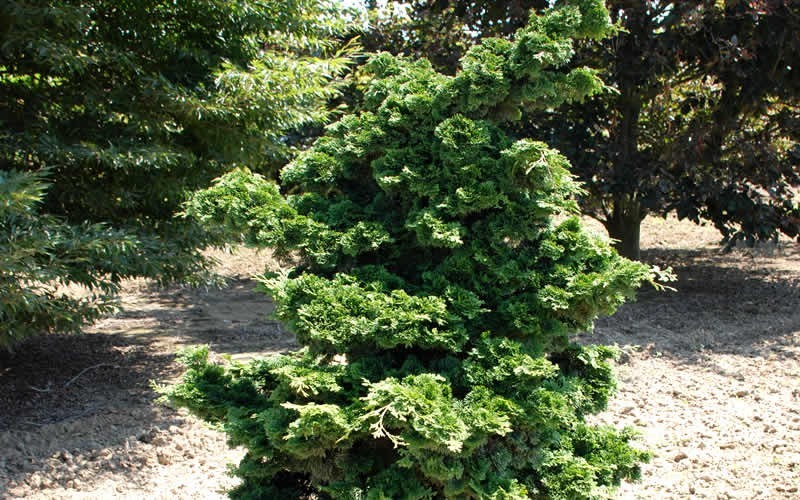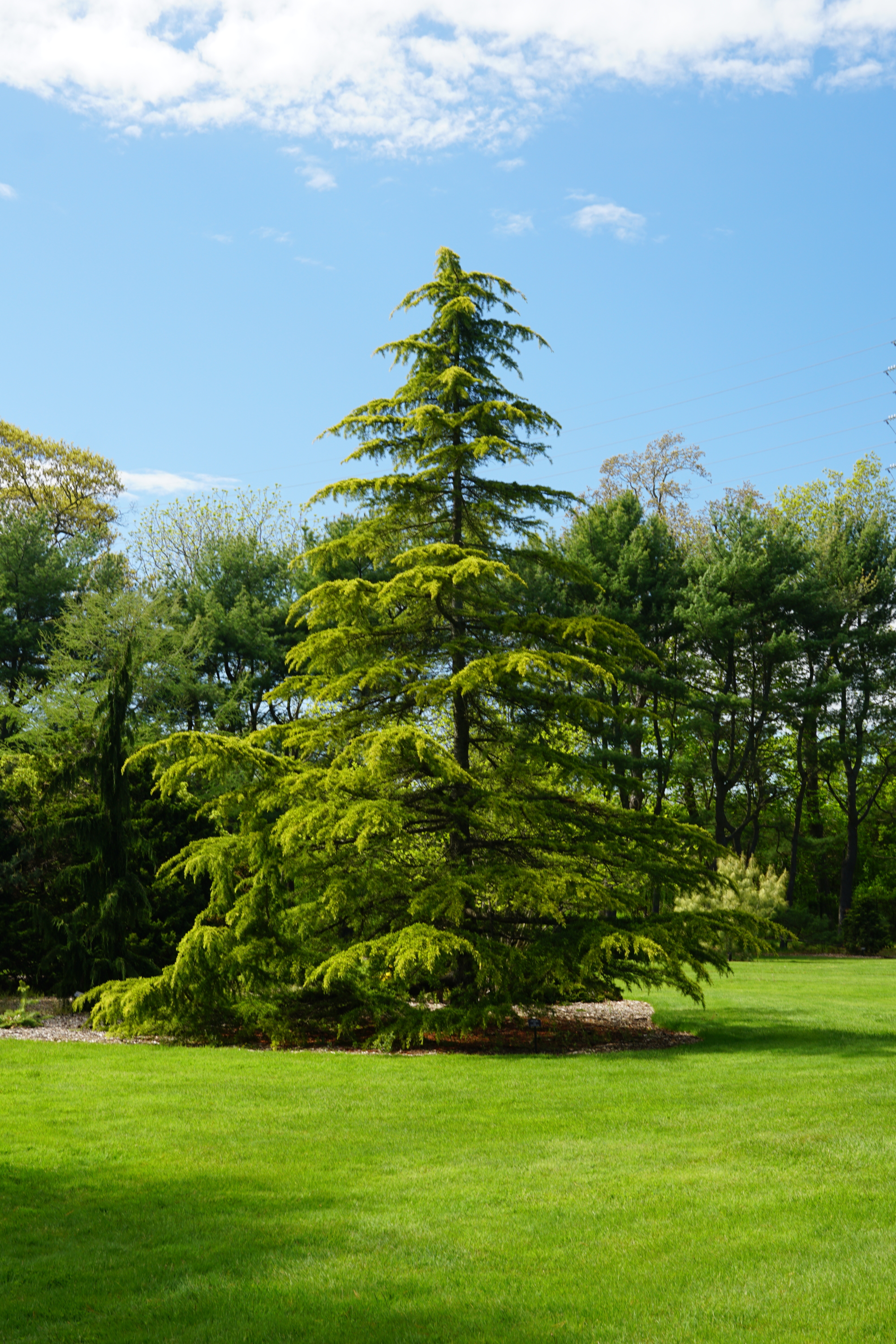BLUE CHINA FIR
Cunninghamia lanceolata ‘Glauca’
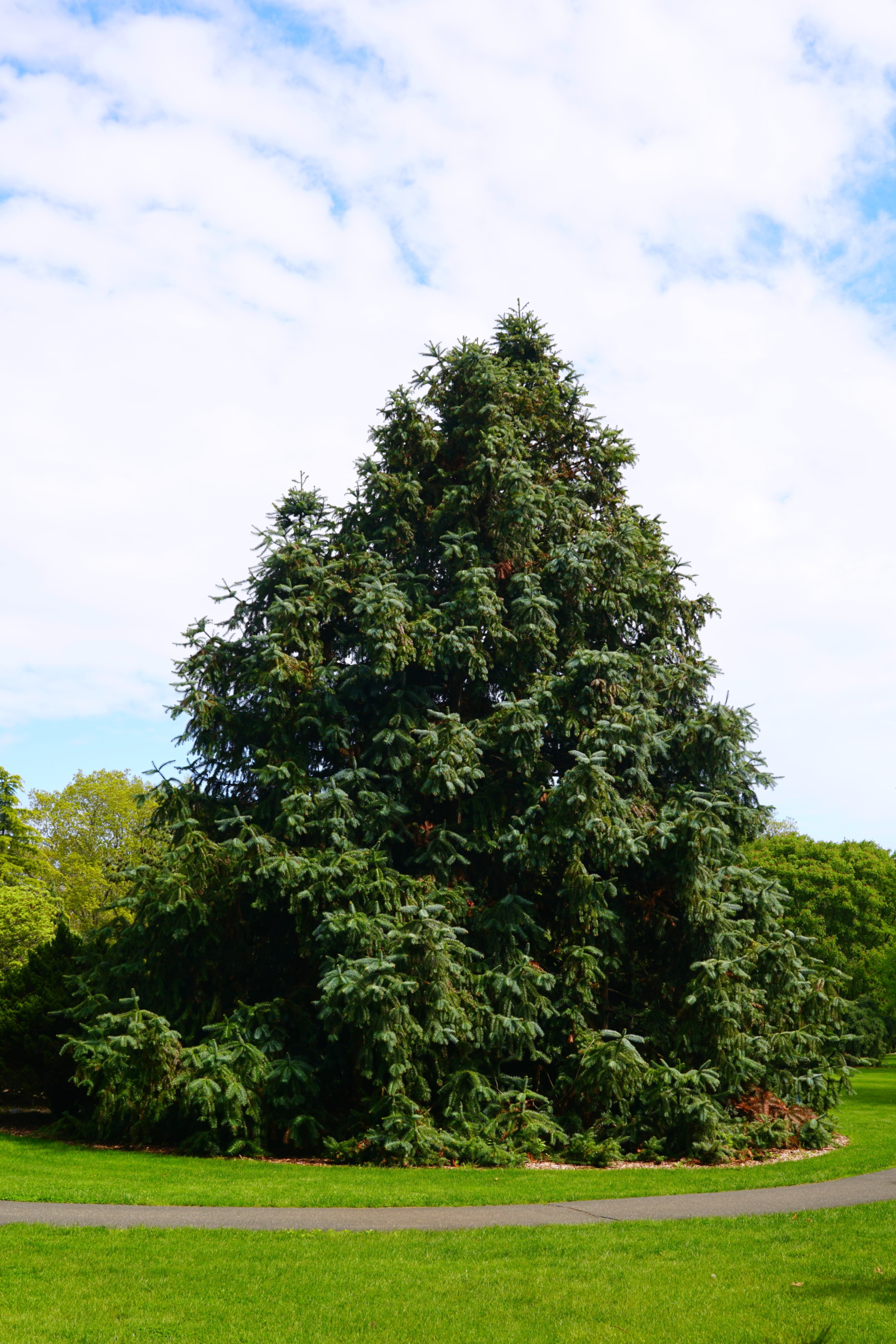
COLLECTION
Pinetum Extension
FAMILY
Cupressaceae
PLANT TYPE
Evergreen
ZONE
7-9
CULTURE
Best grown in moist, acidic, well-drained soils in part shade. Tolerates full sun, but soils should not be allowed to dry out.
NOTEWORTHY CHARACTERISTICS
Cunninghamia lanceolata ‘Glauca’ is an attractive blue form and reportedly has better winter hardiness (to –10 F) than the green species. New foliage is bright blue maturing to blue-green.
PROBLEMS
The species is not reliably winter-hardy to zone 7. If planted in zone 7 it should be sited in a southern exposure protected from winter winds.
GARDEN USES
Best used as a single specimen or as a large accent in a garden.
HISTORY
This is a selected variety of a species not originally from North America.
PINETUM EXTENSION COLLECTION
